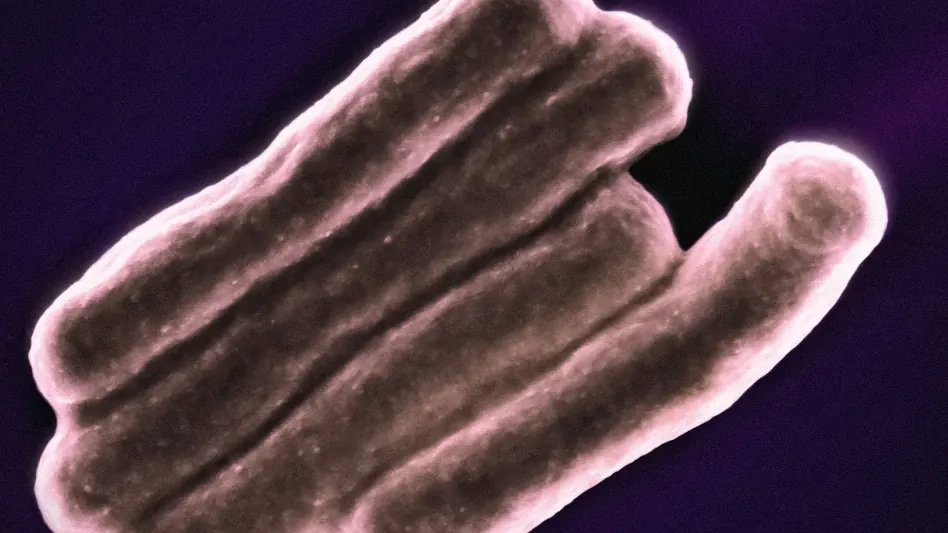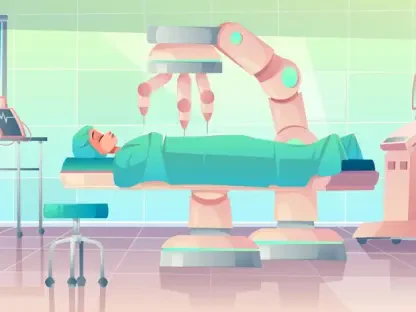Researchers have recently uncovered a fascinating aspect of bacterial life: the discovery of a protein-degrading enzyme in Escherichia coli (E. coli) bacteria that becomes active postmortem. This enzyme, known as Lon protease, plays a crucial role after the bacterial cells die, triggering a vital biochemical process that aids in nutrient recycling within microbial communities. Contrary to previous notions that death marks the cessation of bacterial activity, this new understanding reveals that death is merely a precursor to another essential phase in the bacterial lifecycle.
The Role of Lon Protease in Postmortem Processes
The Lon protease enzyme is instrumental in breaking down proteins into amino acids and smaller peptides after the death of E. coli cells. This degradation process is vital because it releases essential nutrients back into the environment, making them accessible to living bacteria. This biochemical recycling is particularly significant in nutrient-limited ecosystems, where efficient nutrient use is crucial for microbial survival and growth.
Bacterial proteases like Lon are central to postmortem degradation. By breaking down complex proteins from dead cells, these enzymes facilitate the absorption and utilization of released nutrients by surviving bacteria. This process essentially closes the nutrient loop within the community, ensuring that valuable resources are not wasted. The activity of Lon protease highlights the intricate and efficient nutrient cycling mechanisms that exist within microbial ecosystems, which are essential for maintaining the delicate balance of these communities.
Genetic Programming and Community Survival
The persistence of enzymatic activity postmortem underscores a level of genetic programming within bacterial populations, designed to ensure survival and communal growth even after individual bacterial cells have died. This genetic encoding means that enzymes like Lon protease continue to function, breaking down cellular components and providing vital nutrients for the community. This process is particularly advantageous under stress conditions, where nutrient availability can be the difference between survival and extinction.
The continued activity of Lon protease underlines a selective advantage for bacterial communities. By aiding in the recycling of nutrients, these enzymes support the communal well-being of similar bacterial strains, promoting their growth and survival. This selective advantage indicates that the genetic traits ensuring postmortem enzymatic activity have likely been favored through evolution, ensuring the continued benefit to living cells within the population and contributing to the overall fitness and sustainability of the microbial community.
Experimental Evidence Supporting Lon Protease Functions
A series of experiments were conducted to understand the roles of different enzymes in postmortem nutrient recycling. Researchers used E. coli strains deficient in key proteases, such as Lon and OmpT, to observe the effects on nutrient recycling. It was noted that the absence of Lon protease significantly hampered the nutrient-recycling process, confirming its essential role in breaking down proteins from dead cells.
Further experimentation demonstrated that maintaining the Lon system incurs a fitness cost under non-stressed conditions. Wild type cells with an active Lon system grew more slowly compared to those that lacked this protease. However, under stressful conditions, such as heat shock, the cells with Lon protease showed improved survival and growth rates. This illustrated the dual role of the Lon enzyme in stress response and postmortem nutrient recycling, highlighting its critical importance despite the initial fitness cost.
Evolutionary Implications of Lon Protease
The evolutionary implications of Lon protease’s role in postmortem processes were explored, leading researchers to hypothesize how traits that manifest post-death could be favored by natural selection. The concept of kin selection provides a plausible explanation; by aiding nutrient recycling within the community, Lon-producing cells ensure that their genetic lineage benefits, even at a direct fitness cost to individual cells.
This theory aligns with broader evolutionary principles, suggesting that traits ensuring the survival of genetic relatives can be selected by nature. By providing essential nutrients to living relatives, the activity of Lon protease postmortem supports the genetic success of the community. This study offers experimental evidence supporting the idea that postmortem proteases like Lon are integral to microbial nutrient cycling and highlights the complex interplay between individual fitness and communal well-being in evolutionary processes.
Broader Implications and Future Research
Researchers have recently made a remarkable discovery about bacterial life involving Escherichia coli (E. coli) bacteria. They identified a special enzyme called Lon protease that activates only after the bacterial cells die. This enzyme plays a significant role during the postmortem phase, initiating critical biochemical processes that facilitate nutrient recycling within microbial communities. Previously, it was believed that bacterial activity completely ceased once the cells died. However, this newfound insight changes our understanding, showing that death is not the end but a transition to another crucial phase in the bacterial lifecycle. This discovery highlights that even in death, bacterial cells contribute to their ecosystem, emphasizing the complex interplay within microbial environments. The findings offer new perspectives on microbial ecology and could potentially prompt further research into bacterial functions in various environments, shedding light on the multitude of roles bacteria play even after their apparent end.









